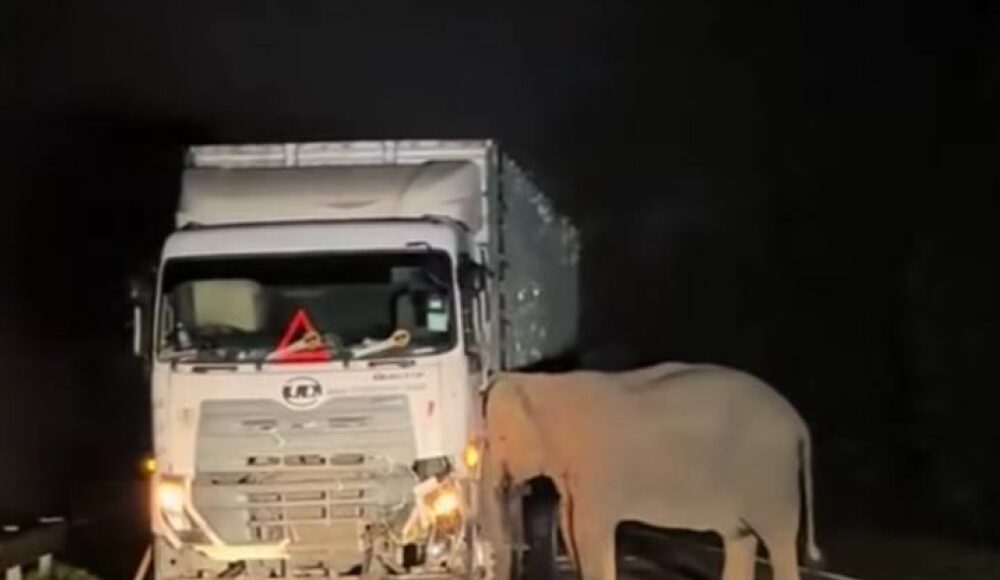MAY 13 — Actively investing resources now to safeguard wildlife at crossings to ensure sustainability for our future generations.
“If we do not do something to help these creatures, we make a mockery of the whole concept of justice.” Jane Goodall, animal rights and climate change activist.
The whole country was left shattered, heartbroken and depressed with pictures and videos of a mother elephant that stayed for 5 hours next to the lorry that claimed the life of her little calf, refusing to leave his side. She had to be tranquillised and moved to make way for clearing works. This caused a national outpouring of tears and sympathy for not only the elephant but also for the fate of wildlife in Malaysia – especially those that had perished as roadkill.
The whole country was left shattered, heartbroken and depressed with pictures and videos of a mother elephant that stayed for 5 hours next to the lorry that claimed the life of her little calf, refusing to leave his side.
Yesterday, the Ministry of Natural Resources and Environmental Sustainability stated that a total of 2361 wild animals have been killed by vehicles since 2020 – an average of 44 animals killed per month and an average of one per day!
While it is commendable animal crossing pathways will be part of new major infrastructure projects like the ECRL, and possibly in other areas, exploring alternative solutions that have been tried and tested is a must at this point.
In the European Union policy for energy, climate change and environment, a ‘practical support’ solution to minimise vehicle-bear collisions collectively shared by Greece, Italy, Romania and Spain through tangible and workable solutions produced almost zero animal fatalities and in some areas, a 90 per cent decrease in animal roadkill.
Some of these proposals were radio tagging bears to study their movement and to identify priority crossings areas, to monitor high risk roads and crossing points, traffic volume and vehicle speed, to build and monitor underpasses, flyover animal crossings with camera traps, to install animal-vehicle prevention systems (AVC/PSs) in high risk areas such as animal detection systems that will activate flashlights or warning noises to drivers and to scare of animals from the side of the roads, changes in driver behaviours like driving at reduced speed especially at night at areas known for animal activity, virtual fences with acoustic and visual deterrent sensors using high beams when appropriate, smart roadside infrastructure to detect large animals near the road, creating a geographic database or geodatabase to track wildlife road mortality including through developing a hybrid app that allows users to report animal deaths, sightings near roads to aim public awareness.
All these efforts have significantly reduced bear mortality to zero in over 4 years on the Egnatia Highway and 90 per cent of drivers reduced speed in response to the newly installed warning signs. These initiatives were funded by the LIFE Programme which is EU’s funding instrument for the environment and climate action.
It is not too late for Malaysia to invest in the same – federal ministries and state agencies must work together in not only coughing up funds but to also expedite long term solutions proposed by Government agencies. Additionally, it is also our responsibility as road users to practise caution, care, love and respect for our wildlife when travelling. Enforcement alone is not enough.
Malaysia is 5 years away from fulfilling its SDG pledges including SDG 15 which is Life on Land and SDG 14 Life Below Water, it is undeniable that many SDGs are intertwined with animal welfare and biodiversity. Perhaps SDG18 on Zero Animal Exploitation which is in the works is the future of wildlife conservation.
We must be part of the solution and it must happen in our generation to see it through. A generation committed, devoted and responsible to safeguard our wildlife in Malaysia.
Kasthuri Patto
DAP CEC member
DAP International Secretary
DAP Women Vice Chairperson
* This is the personal opinion of the writer or publication and does not necessarily represent the views of Malay Mail.





